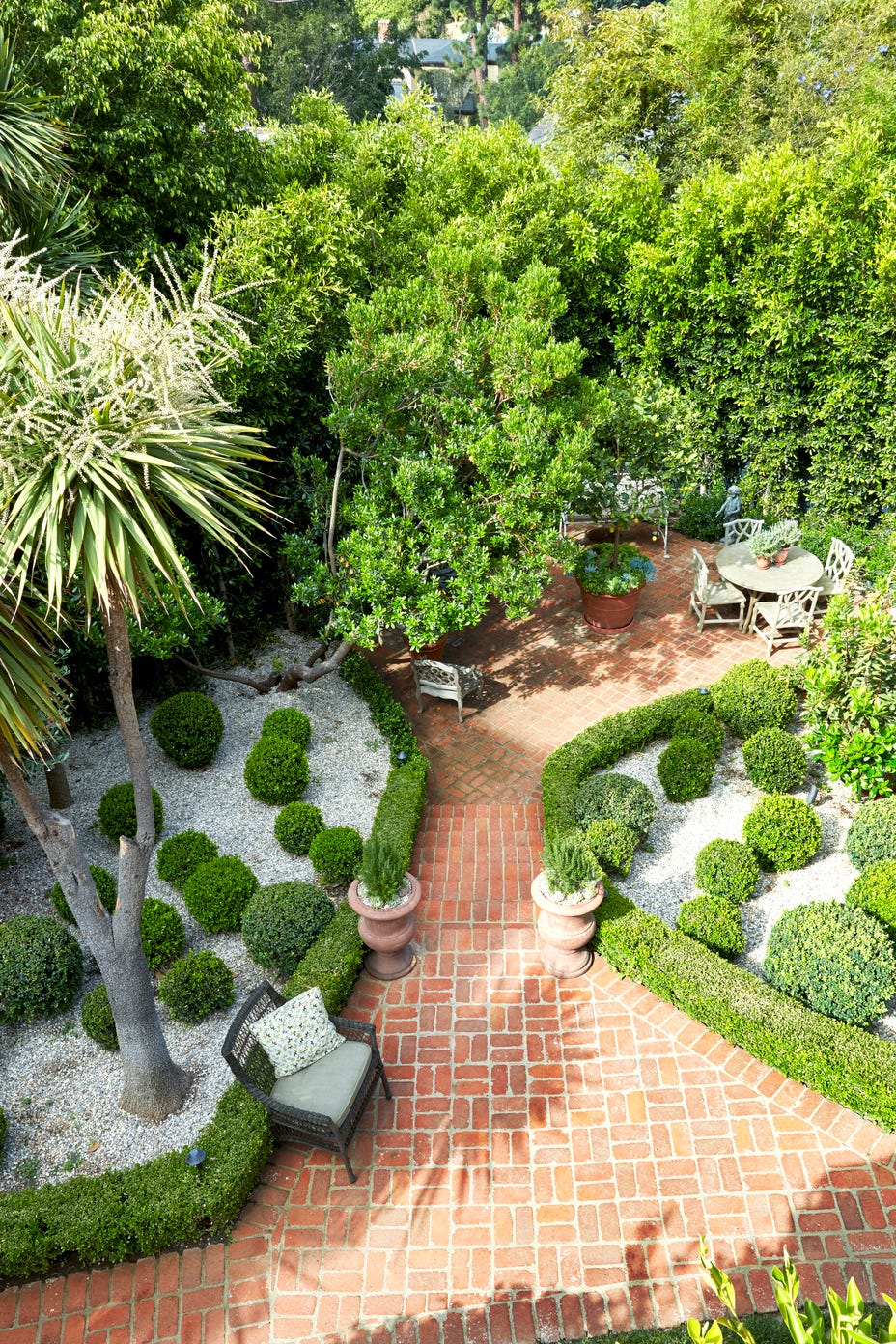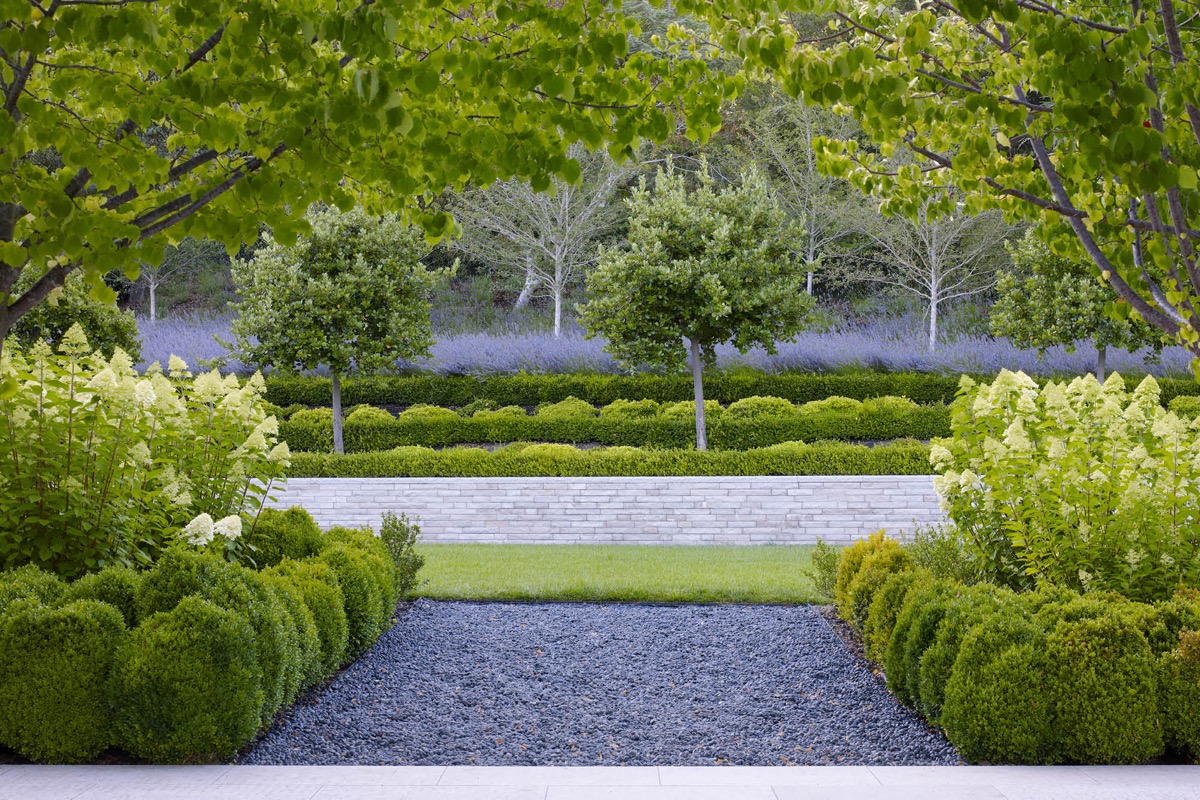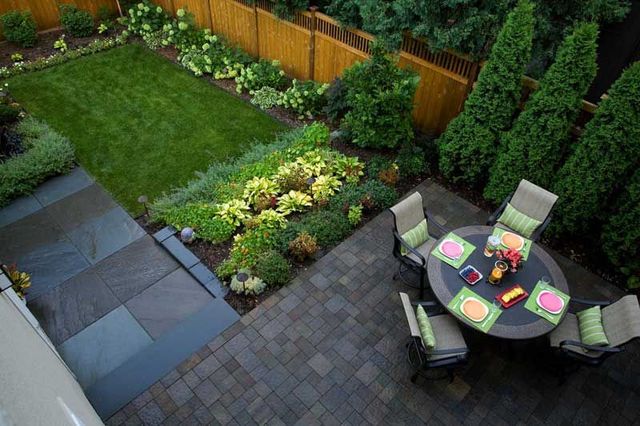Checking Out Different Sorts Of Landscaping to Improve Your Outdoor Environment
Landscaping plays a crucial duty in specifying outdoor rooms. Various designs, from typical gardens to modern-day minimalist designs, use distinct advantages for enhancing visual appeals and function. Incorporating components like xeriscaping and native plants can add to ecological balance. Comprehending the interaction of hardscape and softscape is essential for developing inviting environments. The options available can be overwhelming, triggering one to reflect on which style best aligns with their vision for an outdoor haven.
Traditional Garden Landscape Design

While several modern yards welcome minimalism and indigenous growings, traditional yard landscape design remains a treasured strategy that emphasizes balance, structure, and decorative attributes. This style usually incorporates official geometric formats, where hedges, flowerbeds, and paths are arranged with precision. Central focal points, such as sculptures or water fountains, draw the eye and give a sense of harmony.Traditional landscape design regularly consists of a variety of plant kinds, showcasing seasonal blooms and evergreen aspects. Classic hedges, perennials, and annuals develop lively colors and appearances throughout the year. In addition, trellises, arches, and pergolas include upright rate of interest and serve as support for climbing up plants, improving the general aesthetic.The use natural products, such as stone and wood, more improves the conventional landscape, adding to a timeless high quality. Inevitably, this style welcomes leisure and enjoyment, making it a cherished selection for those seeking a picturesque exterior atmosphere.
Modern Minimalist Landscaping
Modern minimal landscape design highlights simpleness and capability, defined by clean lines and open areas. Trick features include a minimal plant scheme and thoughtful hardscape design that focuses on usability and aesthetic allure. Reliable plant selection methods better boost the minimalist technique, creating serene outside atmospheres that motivate leisure and consideration.
Trick Characteristics of Minimalism
A growing fad in landscaping is the welcome of minimalism, defined by simpleness and capability. Minimal landscape design concentrates on tidy lines, open rooms, and a limited color scheme, promoting a sense of peace. Aspects are very carefully curated to stay clear of clutter, permitting each component to stick out. Using natural materials, such as stone and wood, enhances the organic feeling while keeping an aesthetic balance. In addition, minimal layouts usually integrate geometric forms, which can produce aesthetic passion without overwhelming the senses. Water functions might be consisted of, offering as prime focus that boost tranquility. Overall, minimalism in landscaping emphasizes the beauty of restriction, permitting nature's intrinsic qualities to radiate through in an unified exterior setting.
Plant Selection Methods
Effective plant selection is necessary for accomplishing the desired visual in contemporary minimal landscape design. The emphasis must get on simpleness, using a restricted palette of plants that complement each various other and the surrounding environment. Native plants are frequently excellent, as they need less maintenance and water, advertising sustainability. Picking types with differing textures and heights can include visual rate of interest without overwhelming the room. Grouping plants in clusters as opposed to spreading them boosts communication and strengthens the minimalist style. Evergreen selections can give year-round structure, while seasonal blooms present refined shade changes. Inevitably, the objective is to produce a serene exterior space that symbolizes peace and consistency with thoughtful plant options.
Hardscape Design Principles
Crucial components in hardscape style considerably contribute to the total looks and performance of minimal landscape design. This style strategy emphasizes tidy lines and underrated products, developing a minimalist aesthetic experience. Trick components include paths, patios, and preserving walls, which not only specify spaces however also improve availability and functionality. Making use of materials such as concrete, stone, and timber is common, showing a natural yet modern-day visual. Integrating in proportion formats and geometric shapes better strengthens the minimalist ideology, enabling for an unified blend with surrounding greenery. In addition, proper water drainage and disintegration control are essential factors to consider, making certain longevity and sustainability. Ultimately, efficient hardscape design works as a structure that matches softscape components while preserving equilibrium and simplicity in outside settings.
Cottage-Style Landscaping
Cottage-style landscaping offers a delightful technique to producing inviting exterior spaces. By incorporating enchanting plant mixes, this style promotes a feeling of heat and fancifulness. The emphasis on comfy, distinct locations encourages leisure and satisfaction of nature.
Captivating Plant Mixes
Although several homeowners seek to create a picturesque outdoor room, attaining the beauty of cottage-style landscaping frequently hinges on thoughtful plant mixes. Vibrant flowers, rich foliage, and aromatic herbs can be artfully combined to evoke a feeling of fancifulness and fond memories. Combining lavender, daisies, and foxgloves develops a vivid tapestry that attracts pollinators while supplying a fascinating scent. Integrating decorative grasses like miscanthus can add texture and motion, matching the softer blossoms. Additionally, blending seasonal and annual plants assurances continuous color throughout the periods. Using mountain climbers, such as clematis or honeysuckle, can improve vertical interest. Overall, these combinations not just enhance the landscape but also foster a charming and inviting environment.

Comfortable Exterior Rooms
Developing comfortable outdoor spaces needs a mindful blend of comfort and appeal, matching the dynamic plant mixes discovered in cottage-style landscape design - Bbq Island Installation. These locations often include welcoming seating setups, such as weather-beaten wood benches or supported chairs surrounded by lavish greenery. Soft lighting, like fairy lights or lights, adds heat, transforming the area right into a serene retreat. Integrating components such as trellises decorated with climbing up roses or fragrant natural herbs enhances sensory experiences. Furthermore, paths made from rustic rocks welcome exploration and link with nature. Decorative touches like birdbaths or wayward garden art add to a sense of whimsy. Inevitably, the goal is to produce a captivating atmosphere that urges relaxation and enjoyment of the charm bordering these relaxing exterior sanctuaries
Xeriscaping for Water Conservation
How can neighborhoods stabilize aesthetic landscaping with journalism demand for water conservation? Xeriscaping arises as a viable remedy, try these out promoting lasting techniques that minimize water usage while improving outdoor beauty. This landscape design method concentrates on using drought-resistant plants belonging to the region, which need substantially much less water than traditional yards. By incorporating compost and effective irrigation systems, xeriscaping reduces evaporation and drainage, further preserving priceless water resources.Communities can produce aesthetically attractive landscapes through cautious planning, picking a varied array of structures and colors that prosper in dry problems. Furthermore, xeriscaping encourages using ornamental rocks and ornamental gravel, providing eye-catching and practical choices to grass yards. As communities welcome this eco-friendly technique, they not just decrease their water intake however also advertise biodiversity and resilience in their neighborhood ecosystems. Eventually, xeriscaping serves as a demo of the harmony in between visual allure and ecological obligation.
Hardscape Design Components
Hardscape style elements play a necessary duty in improving exterior areas by offering framework and capability. These non-plant functions, such as patios, pathways, decks, and wall surfaces, develop visual passion while serving useful objectives. Utilizing materials like concrete, block, and rock, hardscaping contributes to the total visual allure and sturdiness of a landscape.Incorporating hardscape elements can specify areas within a lawn, guiding activity and motivating social communication. As an example, a well-placed path can attach various sections of the yard, while preserving wall surfaces can manage elevation modifications and stop erosion.Furthermore, hardscape style can boost ease of access and safety, providing stable surfaces for lounging or strolling. Efficient integration of hardscape elements complements soft landscape design, ensuring a balanced outdoor setting. Inevitably, thoughtful hardscape layout enhances not just the elegance of exterior rooms yet additionally their use, making them extra inviting and useful for home owners and visitors alike.
Outdoor Living Spaces
While outdoor living spaces use a seamless blend of convenience and nature, they function as important expansions of a home, improving way of living and leisure. These areas can consist of outdoor patios, decks, or outside kitchens, made to foster relaxation and entertainment. Grill Islands. By integrating functional furnishings and fashionable design, property owners produce inviting environments for gatherings or silent evenings.The assimilation of shade structures, such as awnings or pergolas, protects against the elements while keeping an open feeling. Fire pits and outside heaters extend usability into cooler months, giving warmth and ambiance. Additionally, incorporating lighting attributes improves the area's usability after sunset, developing an enchanting night atmosphere.Landscaping aspects, such as pathways and borders, even more specify these areas, guiding movement and adding aesthetic charm. Eventually, outside space transform yards into functional hideaways, advertising a way of living that welcomes both nature and convenience
Native Plant Landscape Design
Indigenous plant landscaping emphasizes using indigenous flora to develop harmonious and lasting exterior atmospheres. This strategy not only boosts biodiversity but also conserves water and reduces the need for chemical fertilizers and chemicals. By choosing plants that are belonging to a particular area, home owners can ensure that their landscapes are well-adapted to regional soil and environment conditions, causing lower upkeep requirements.Additionally, native plants give vital environments for local wildlife, including , butterflies, and birds, promoting environmental health and wellness. Landscape makes that include these plants commonly include naturalistic designs that simulate local communities, promoting a local color and connection to the environment.Furthermore, indigenous plant landscaping can contribute to dirt stability and disintegration control, making it an ecologically responsible choice. On the whole, this technique not just enhances exterior rooms but additionally sustains the neighborhood environment, developing a lasting balance between human task and nature.

Frequently Asked Questions
Just How Can I Pick the Right Landscaping Style for My Home?
Choosing the best landscaping style for a home involves assessing the residential property's architecture, environment, and personal choices. Retaining Wall Installation. Investigating different designs and consulting professionals can offer advice to create an unified outside space you can try this out tailored to specific needs
What Is the Average Expense of Professional Landscaping Providers?
The typical cost of professional landscaping services generally varies from $1,000 to $5,000, depending upon job place, dimension, and complexity. Property owners need to take into consideration obtaining numerous quotes to ensure they receive reasonable prices and quality service.
How Often Should I Maintain My Designed Yard?
The regularity of preserving a designed lawn typically relies on the plants and features present. Usually, regular maintenance every couple of weeks is encouraged, with seasonal tasks raising in regularity throughout top expanding seasons for perfect wellness and aesthetic appeals.
Exist Landscaping Options for Tiny Urban Spaces?

Numerous landscape design options exist for small metropolitan areas, including vertical gardens, container plants, and rooftop gardens. Integrating these aspects can maximize minimal areas while offering greenery, improving aesthetic appeals, and enhancing air high quality in city environments.
What Plant kingdom Are Ideal for Attracting Regional Wildlife?
The most effective plants for drawing in neighborhood wild animals include indigenous flowering varieties, berry-producing bushes, and diverse lawns. These plants supply important helpful resources food and environment, fostering a growing community that sustains various birds, pests, and tiny mammals. Several property owners seek to develop an attractive exterior area, achieving the appeal of cottage-style landscape design commonly pivots on thoughtful plant mixes. Creating cozy outside rooms calls for a careful mix of comfort and appeal, matching the vivid plant combinations discovered in cottage-style landscaping. Native plant landscape design stresses the use of native plants to produce unified and sustainable outdoor settings. Landscape creates that incorporate these plants usually feature naturalistic formats that resemble regional ecological communities, fostering a sense of location and link to the environment.Furthermore, indigenous plant landscape design can add to dirt security and disintegration control, making it an ecologically accountable option. Various landscaping alternatives exist for small urban spaces, including upright gardens, container plants, and roof gardens.